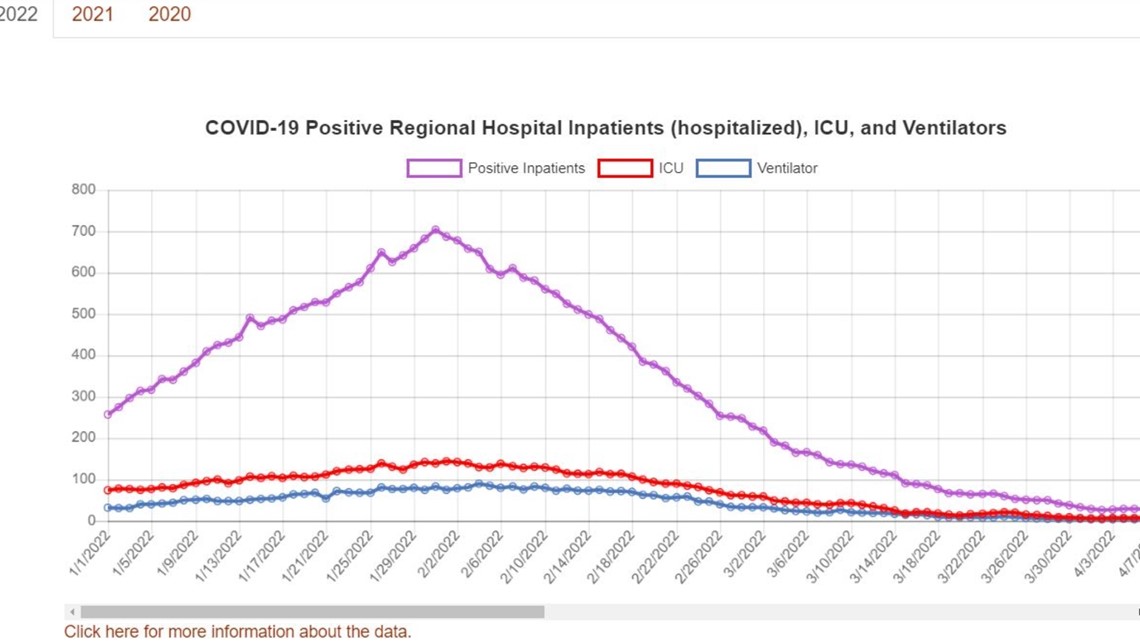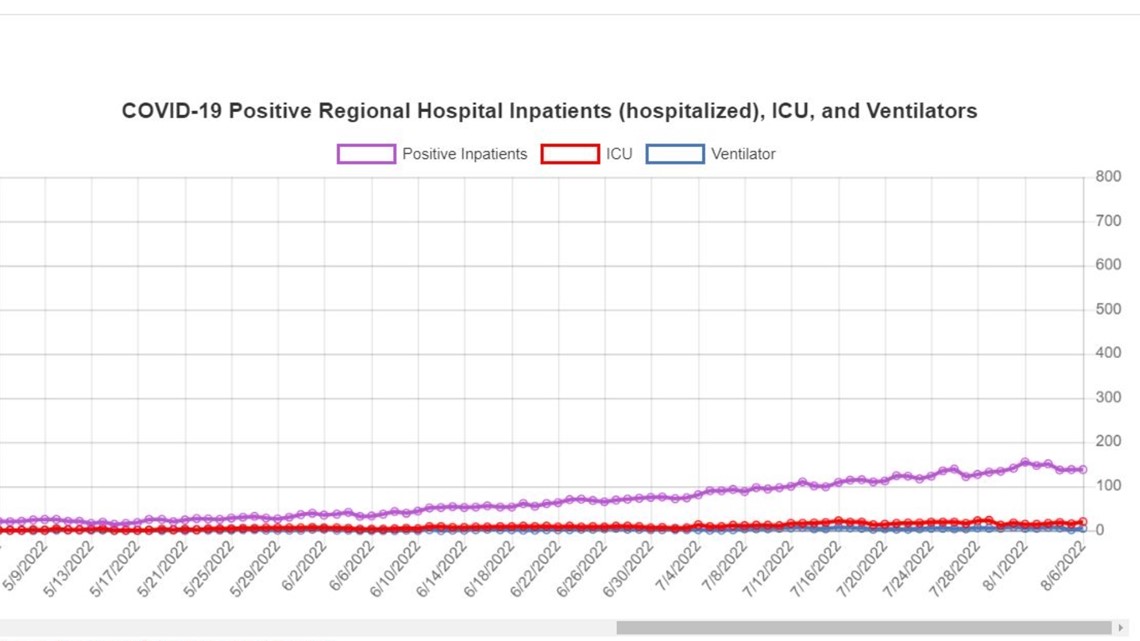KNOXVILLE, Tenn. — COVID-19 appears to be waning again across most of East Tennessee after public health agencies reported fewer COVID-19 cases and hospitalizations this week.
On Thursday, the Centers for Disease Control and Prevention reported many counties had dropped to "medium" COVID-19 community level/risk. The CDC is no longer recommending masks for counties in East Tennessee unless they have a high-risk condition.
Some of the smaller counties in East Tennessee remain in "high" risk, but hospitalizations remain relatively low. Counties with smaller populations will likely see this risk factor fluctuate for the next few weeks until new COVID infections drop below a certain threshold.


High-Risk East TN Counties (Masks recommended in public indoors)
- Claiborne
- Cocke
- Greene
- Hawkins
- Scott
Medium-Risk East TN Counties (Extra precautions for those with high-risk conditions)
- Anderson
- Blount
- Campbell
- Roane
- Morgan
- Knox
- Hamblen
- Grainger
- Jefferson
- Loudon
- Union
- Monroe
- Sevier
- Fentress
- McMinn
- Meigs
- Hancock
Low-Risk East TN Counties
- Cumberland
- Rhea
On Wednesday, the Knox County Health Department reported a noticeable decline in the number of new COVID cases and a slight decline in the number of COVID hospitalizations.
In the 7-day reporting period between July 31 and Aug. 6, KCHD reported 790 new cases in Knox County -- down from 924 in the previous reporting period. Hospitalizations had fallen slightly to 138 total COVID patients across 19 regional hospitals as of Aug. 6.
The CDC on Thursday also relaxed a few more COVID recommendations that had been in place since the start of the pandemic two and a half years ago, including dropping its quarantine rules for people who come in close contact with someone infected with COVID. The CDC is no longer recommending schools to implement "test-to-stay" policies now that it has dropped the quarantine recommendation.
The CDC also removed guidance on social distancing, which recommended people to stay at least 6 feet apart and stick to small groups.
“The current conditions of this pandemic are very different from those of the last two years,” said the CDC's Greta Massetti, an author of the guidelines.
Data from KCHD showed COVID-19 cases and hospitalizations had been slowly but steadily increasing from mid-April up until early August.
This wave has remained relatively flat compared to other waves over the past two years, particularly the Delta and Omicron waves in 2021 that saw rapid spikes. At the peak of the omicron wave last winter, a total of 704 people had been hospitalized for COVID at the same time. Meanwhile, hospitalizations during this wave reached a high of 155 on August 1.
Winter 2022 to Spring 2022 Regional Hospitalizations:


Spring 2022 to Summer 2022 Regional Hospitalizations:


The reduction in hospitalizations is not necessarily due to fewer people getting infected but is more likely due to the vast majority of people in the U.S. now having built up some immunity against the virus. The CDC estimated that 95% of Americans 16 and up now have some level of immunity from being vaccinated and/or from being infected with COVID.
The true number of infections from this wave is suspected to be much larger than what's being reported in public health data because more people are relying on at-home COVID tests to determine if they have been infected. If the majority of people are now using at-home tests, then that means the majority of positive cases across the country are also going unreported.
The average numbers of reported COVID-19 cases and deaths across the U.S. have been relatively flat this summer, at around 100,000 cases a day and 300 to 400 deaths.
The CDC previously said that if people who are not up to date on their COVID-19 vaccinations come into close contact with a person who tests positive, they should stay home for at least five days. Now the agency says quarantining at home is not necessary, but it urges those people to wear a high-quality mask for 10 days and get tested after five.
The agency continues to say that people who test positive should isolate from others for at least five days, regardless of whether they were vaccinated. CDC officials advise that people can end isolation if they are fever-free for 24 hours without the use of medication and they are without symptoms or the symptoms are improving.
The Associated Press contributed to this report.

